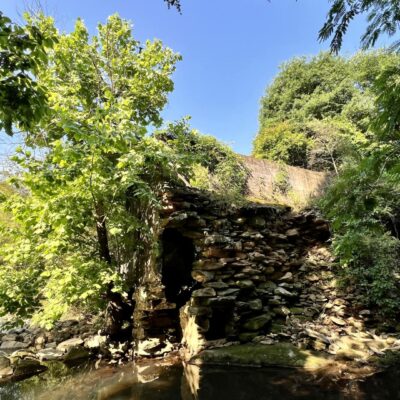Lee’s Mill on the Flint River

The Story
Lee’s Mill, which sits along the headwaters of the Flint River, was operated by a Clayton County pioneer family up until the death of its patriarch W.L. Lee in 1933. The earliest portions of the structure may date to the antebellum period when William Thames operated a saw and grist mill in the same area. Though ruins today, the mill’s complete wooden structure still stood in 1946, when it was photographed by noted Atlanta historian Howard Kurtz. With the dominating growth of the nearby Hartsfield-Jackson Atlanta International Airport, the area near the mill has been zoned for heavy industrial development for decades.
The Threat
Today, the ruins of Lee’s Mill are a small pocket of Georgia’s rural past, tucked into the shadows of industrial expansion. As a result of such development, the Flint River experiences intensive floods due to runoff from the hard surfaces of the upstream airport and parking lots, eroding what remains of the mill’s structure. Additionally, the mill ruins, located on private land, remain unsecured and threatened by trespassing and vandalism. Stabilization efforts will allow this tangible connection to a rural past to be saved for future appreciation of a history that can be difficult to discern in such an intensively developed portion of the state.
Disclaimer: The Georgia Trust does not own nor has any direct involvement with this historic site. The Trust’s involvement is limited to listing it on our Places in Peril list to bring awareness to it.







